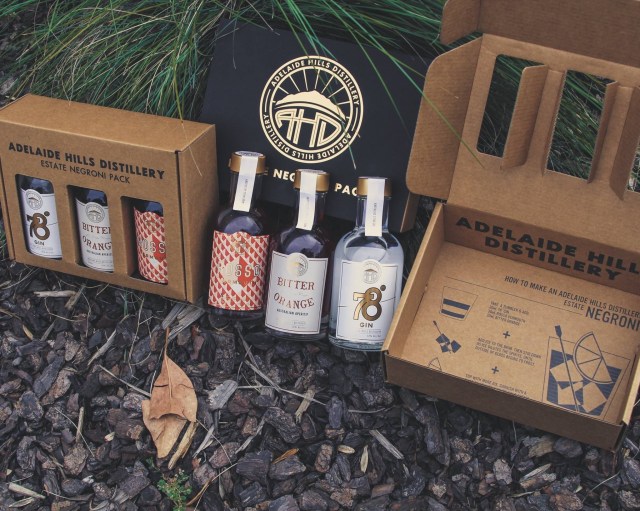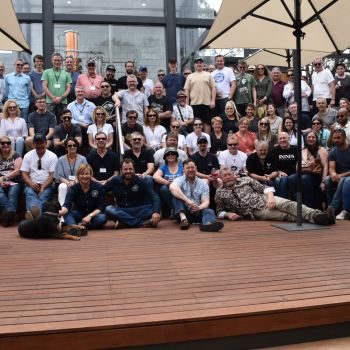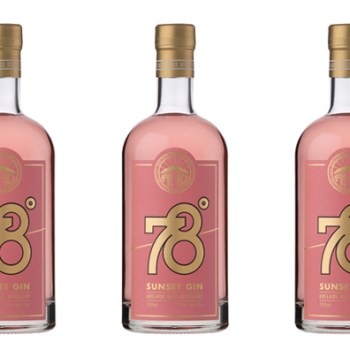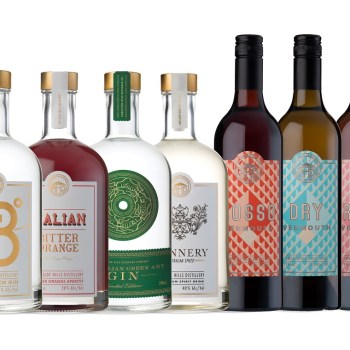With Negroni Week (June 24-30) just around the corner, many bars will be readying themselves to smash through bottles and bottles of imported Campari in order to mix the classic cocktail. But, in the eyes of the team at Adelaide Hills Distillery at least, this needn’t be the case.
The distillery, now operating out of its new home at Lot 100 in the Hay Valley, produces signature Australian versions of the three requisite parts of a Negroni: 78 Degrees Gin, a Rosso Vermouth, and an amaro called The Bitter Orange (formerly known as The Italian).
Together they form the all-Australian Adelaide Hills Distillery Estate Negroni – which, according to Lot 100’s Toby Kline, embodies a “stamp of consistent quality” across three different methods of spirit production all in a single cocktail, with each product highly awarded in its own right.
And while Australia has been producing gin, vermouth and even amari with Australian native botanicals for a while now, no single company has been able to combine production of all three under the same umbrella.
“Each product tells a quality story and each has a very different method of production – but in our research, we couldn’t find anyone who was doing an Estate Negroni, and it’s quite unusual because you have to have expertise in winemaking for the vermouth, you have to have expertise and understanding in how to make an amaro, and of course the gin as well,” he told BARS&clubs.

The team at Adelaide Hills Distillery last week welcomed key bartenders, including The Baxter Inn’s Stuart Morrow and Walter’s Steakhouse’s Brendon Osmers, for a site tour of the sustainability-driven facility.
Central to the visit were the tasting sessions, where key elements of the Estate Negroni – in particular The Bitter Orange – were compared against other amari available on the market.
In comparing The Bitter Orange with Campari, Kline pointed to the former’s “New World”, vibrant and fruit-forward flavour profile as a “fresh interpretation of an amaro that speaks of Riverland oranges and Sunrise limes, with lifted notes on the nose but still the same hard bitterness”, versus Campari’s “Old World” and firmly bitter profile.
“In terms of bitterness, Campari and our Bitter Orange aren’t too far different, believe it or not,” he said.
“Campari has a bucketload more sugar and a bit more bitterness, but ours tastes a bit sweeter because it’s so fruit dominant on the nose – it’s got those lovely sunrise lime and citrus characteristics that carry it.
“When I taste Campari I always get some fruit up front but then the bitterness rips everything else out. Unfortunately these days, depending on which vermouth you use in a Negroni, Campari can just take it over.”
In Kline’s view, the approach of many bars to the Negroni “is not always that constructive or thought about”, and that with Campari as the base amaro, many Negronis are quite unbalanced.
“For me, the underpinning decision driver on what you’re going to mix in is always the amaro, because the amaro is always the most brutal and big thing in there – so if you Campari with a light style gin or vermouth, there’s no real point, because it’s going to cover up or domineer it in the glass,” he said.
“It’s quite funny because there’s always this argument that it’s not a Negroni unless it’s got Campari in it, and I get in a lot of arguments when people take that tact, because we think it’s unfair for that to be standard.
“I also understand that it’s protecting a patch, but all of these things have had so many different lifeforms in what they have been since the drink was invented. We also don’t want to be the classic – we just want to produce something that has our unique Australian signature on it.”

Kline says his team are currently working with a few bars “that are really starting to champion Australian produce” to promote the drink, including Bulletin Place which served the Estate Negroni as an alternative to the traditional Negroni last year.
After all, the cocktail and bar world is driven just as much by innovation as it is tradition, and there’s no reason this shouldn’t extend to the Negroni.
“Traditionally speaking, Count Camillo definitely made his Negroni with Campari, but when they changed the recipe for it that argument kind of went out the window,” Kline concludes.
“Unless you’ve got a historic bottle of Campari, you can’t make a traditional Negroni at all – so why not make it with our amaro?”
Adelaide Hills Distillery (AHD) ‘Estate Negroni’: Recipe
Ingredients:
- 30ml Adelaide Hills Distillery 78 Degrees Gin
- 30ml Adelaide Hills Distillery Rosso Vermouth
- 30ml Adelaide Hills Distillery Bitter Orange
Method: Add all the ingredients above to a tumbler. Add ice to the brim, then stir down as ice dilutes the spirits, until outside of glass begins to frost. Top with more ice, garnish with a slice of orange and serve.



